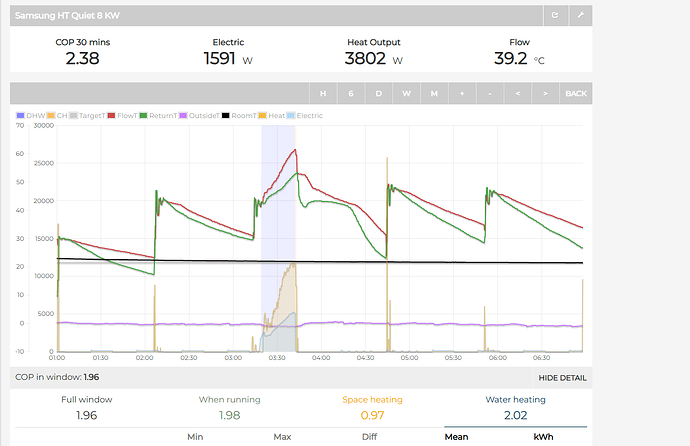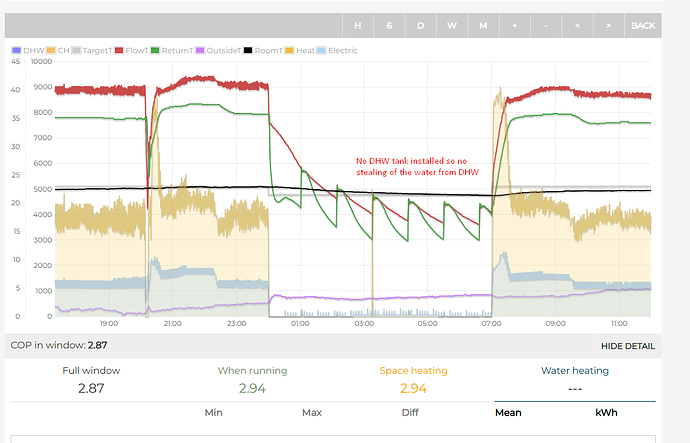Thanks @SarahH
Unfortunately I will not be able to email as I don’t have any monitoring, so no available evidence other than my own informal observations.
Having installed my manual switch, I was able to make further observations last night during a further cold spell.
Firstly, the AF cycle lasted 7 mins for me (not 5 mins as previously thought).
I have a Joule pre-plumbed tank, which has a 3-way valve for selecting space heating / DHW, combined with further 2-way (open/closed) valves for space heating zones. I also have a 50L volumiser plumbed in the primary return to the ASHP.
When I lock the 3-way valve in the space heating position to protect the DHW tank, the circulating water simply loops round the primaries through the 50L volumiser. The 2-way zone valves for the heating circuit do not open (as the call for heat is off) so I’m simply circulating the 50L of warm water in the volumiser combined with the volume of water in my 28mm primary pipes, some 25-30m of it for both flow and return, combined.
My flow temps for heating are typically ~32C, with a dT of around 3C, so when a heating run ends, I’m assuming the temperature in the volumiser is around 29C as it’s located on the primary return. After an hour, when the first AF cycle ran, the LWT sensor in the outdoor unit was registering 26.5C after a few minutes, which seems reasonable. I left the heating off all night, and nine hours later the LWT sensor was reporting closer to 20C after a night of AF cycles - still sufficiently warm not to present a risk of freezing (and I have glycol anyhow). However, if I had such a pre-plumbed arrangement without a volumiser fitted on the primary return (for example, installed within the emitter circuit, or no volumiser at all), then the AF cycle would have a very limited volume of water to work with using our hack. Thus I can maybe see why Samsung defaults to using the DHW circuit, as in these circumstances just the volume of water in the primary pipework with no additional source of heat may provide insufficient protection.
Still, it would be nice to have an installer configurable option giving the choice.
Anyway, I’m happy with my solution but it would be nice to see Samsung take this on board.



